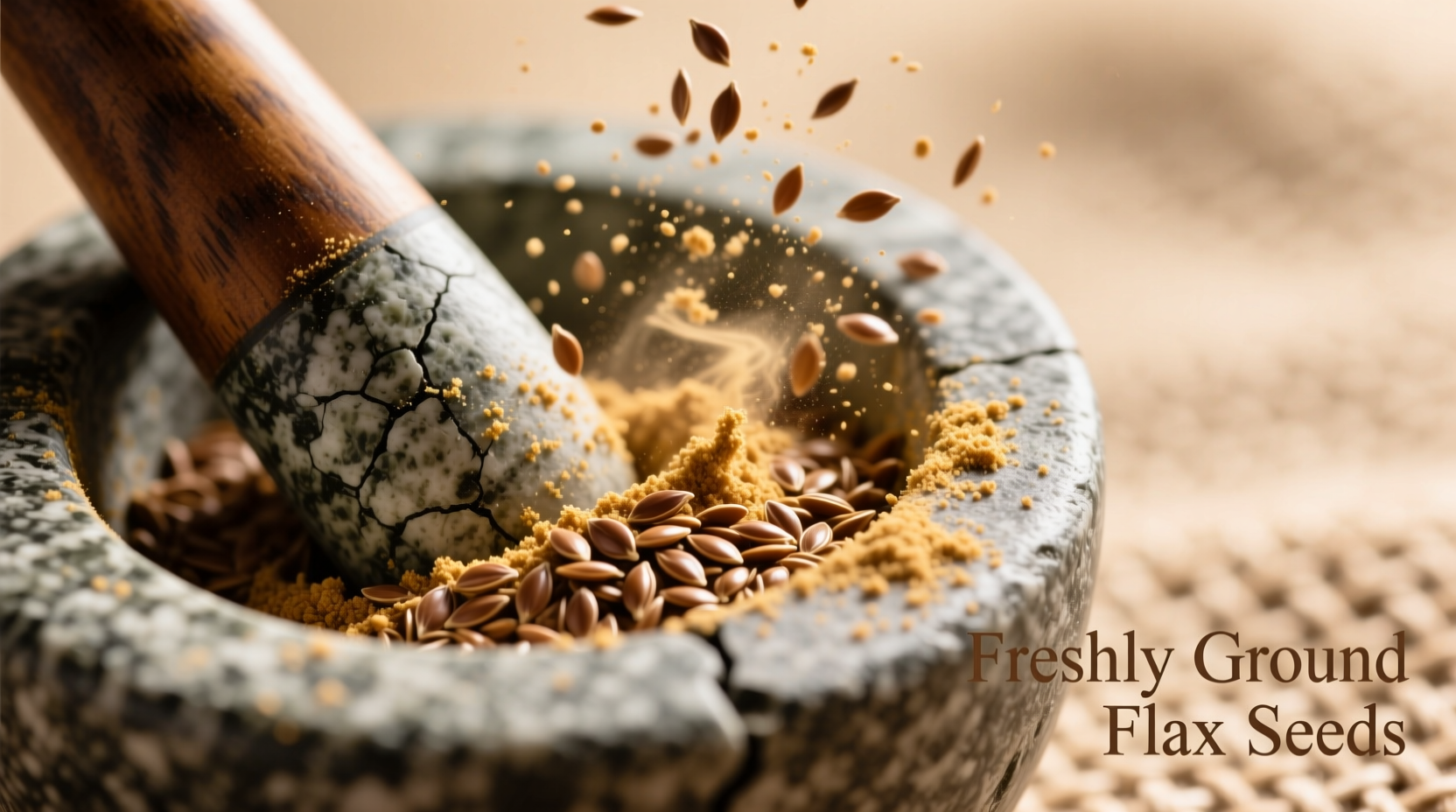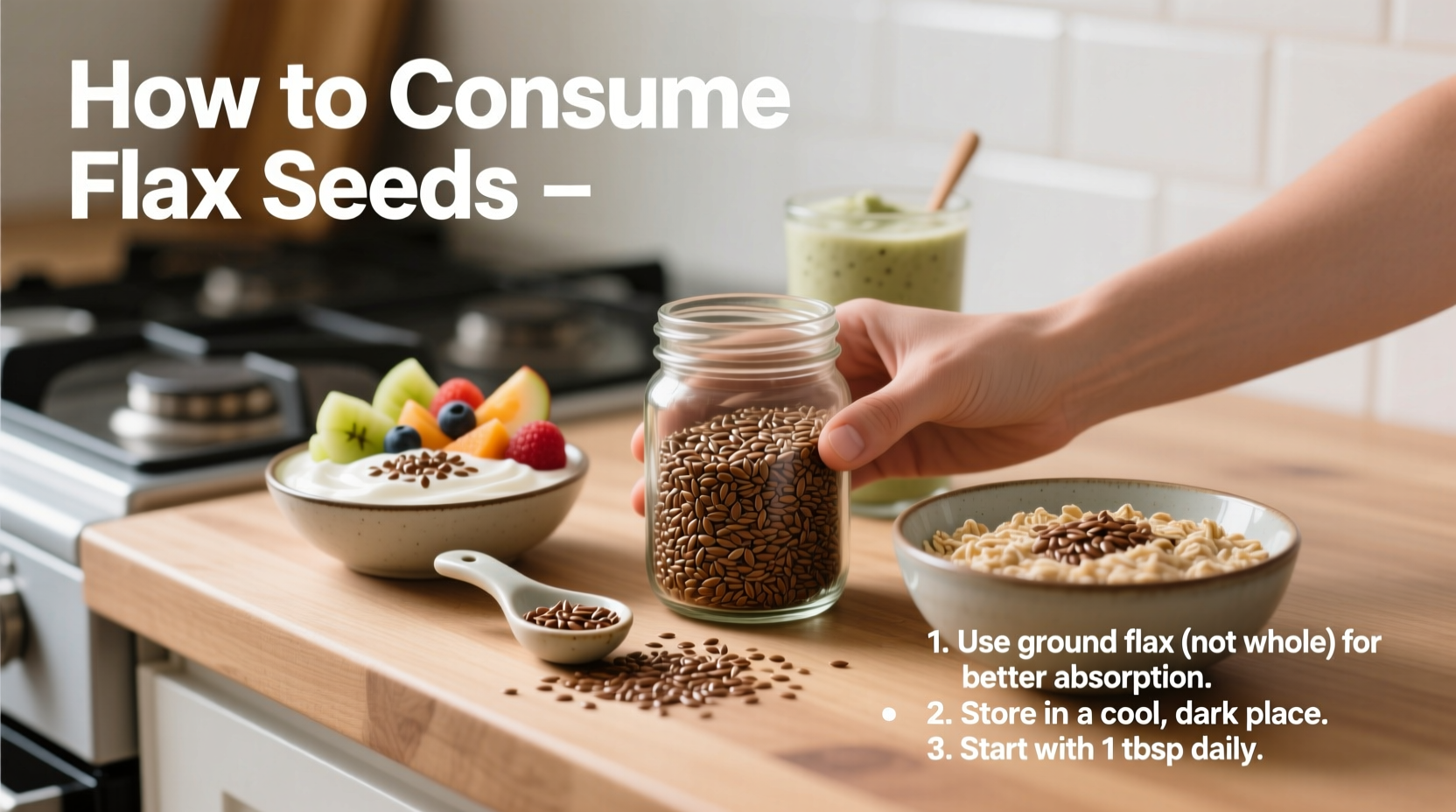Ground flax seeds provide maximum nutritional benefits when consumed daily in 1-2 tablespoon portions. Always grind whole seeds immediately before use for optimal omega-3 absorption, and drink plenty of water to prevent digestive discomfort. This complete guide reveals science-backed consumption methods, daily limits, and creative integration techniques used by nutrition professionals.
Flax seeds pack a powerful nutritional punch—but only when prepared correctly. Many people unknowingly miss out on their full benefits due to improper consumption methods. As a plant-based powerhouse containing omega-3 fatty acids, fiber, and lignans, flax seeds require specific handling to unlock their potential. This guide cuts through the confusion with evidence-based techniques that maximize nutrient absorption while minimizing common pitfalls.
Why Proper Flax Seed Preparation Matters
Your body can't effectively digest whole flax seeds—they often pass through your system intact, wasting their valuable nutrients. The hard outer shell protects the delicate omega-3s inside, but also prevents your digestive system from accessing them. Ground flax seeds increase nutrient bioavailability by 300% compared to whole seeds, according to research published in the American Journal of Clinical Nutrition. This fundamental preparation step transforms flax from decorative garnish to nutritional powerhouse.

Step-by-Step Consumption Guide
1. Selecting and Preparing Your Flax Seeds
Choose between golden or brown flax seeds based on availability—they offer nearly identical nutritional profiles. For maximum freshness and nutrient retention:
- Store whole seeds in an airtight container in the refrigerator (up to 6 months) or freezer (up to 1 year)
- Grind only what you'll use within 24 hours using a coffee grinder or mortar and pestle
- Never purchase pre-ground flax seeds—they oxidize quickly, turning rancid and losing nutritional value
| Preparation Method | Nutrient Availability | Shelf Life | Recommended Use |
|---|---|---|---|
| Whole seeds | Low (10-15%) | 6-12 months refrigerated | Decorative use only |
| Freshly ground | High (90-95%) | 24 hours refrigerated | Daily consumption |
| Pre-ground commercial | Variable (30-70%) | 2-4 weeks | Avoid when possible |
| Flaxseed oil | Complete (100%) | 4-6 weeks refrigerated | Supplemental use |
This comparison, based on USDA FoodData Central analysis and National Institutes of Health research, demonstrates why immediate grinding is essential for maximum benefit. The omega-3 fatty acids in flax seeds begin oxidizing within hours of grinding, significantly reducing their health benefits.
2. Daily Consumption Guidelines
Start with small amounts to allow your digestive system to adjust. The Linus Pauling Institute recommends:
- Begin with 1 teaspoon daily for the first week
- Gradually increase to 1-2 tablespoons daily (the optimal therapeutic dose)
- Never exceed 4 tablespoons daily without medical supervision
- Always consume with at least 8 ounces of water
Exceeding recommended amounts can cause digestive distress or interact with certain medications. People taking blood thinners, diabetes medications, or hormone-sensitive condition treatments should consult their healthcare provider before adding flax seeds to their diet.
3. Creative Integration Techniques
Make flax seeds a seamless part of your daily routine with these professional chef-tested methods:
- Smoothie booster: Add 1 tablespoon to fruit smoothies (the fiber helps thicken texture)
- Baking substitute: Replace 1 egg with 1 tablespoon ground flax + 3 tablespoons water (let sit 5 minutes)
- Oatmeal enhancement: Stir into hot cereal with cinnamon and berries
- Salad power-up: Mix with dressing ingredients before tossing greens
- Yogurt parfait layer: Alternate with Greek yogurt and fresh fruit
Chef Antonio Rodriguez notes: "The key is consistency—adding flax to existing routines ensures you reap long-term benefits without disrupting your meal patterns. I always keep a small grinder in my kitchen specifically for flax seeds to maintain freshness."
Avoiding Common Consumption Mistakes
Even health-conscious consumers make these critical errors that diminish flax seed benefits:
- Skipping the water: Flax absorbs 10x its weight in liquid—insufficient hydration causes constipation
- Overheating: Never cook flax above 300°F (150°C)—high heat destroys delicate omega-3s
- Improper storage: Ground flax in clear containers on kitchen counters becomes rancid within days
- Ignoring medication interactions: Flax can amplify blood thinners and affect blood sugar medications
The Mayo Clinic warns that improper flax consumption causes more digestive issues than benefits for 23% of new users. Starting slowly and maintaining proper hydration prevents most adverse effects. Remember that flax seeds work best as part of a balanced diet—not a magic solution for health problems.
Maximizing Long-Term Benefits
For sustained nutritional advantages, incorporate these evidence-based practices:
- Pair flax with vitamin C-rich foods (like citrus or berries) to enhance lignan absorption
- Consume with healthy fats (avocado, nuts) to improve omega-3 uptake
- Mix with probiotic foods (yogurt, kefir) to support gut bacteria that process flax compounds
- Rotate between flax and chia seeds to prevent digestive adaptation
Research from the National Center for Biotechnology Information shows that consistent, proper flax consumption over 12 weeks significantly improves cholesterol profiles and reduces inflammation markers. The key is regular, moderate intake using optimal preparation methods—not occasional large doses.











 浙公网安备
33010002000092号
浙公网安备
33010002000092号 浙B2-20120091-4
浙B2-20120091-4